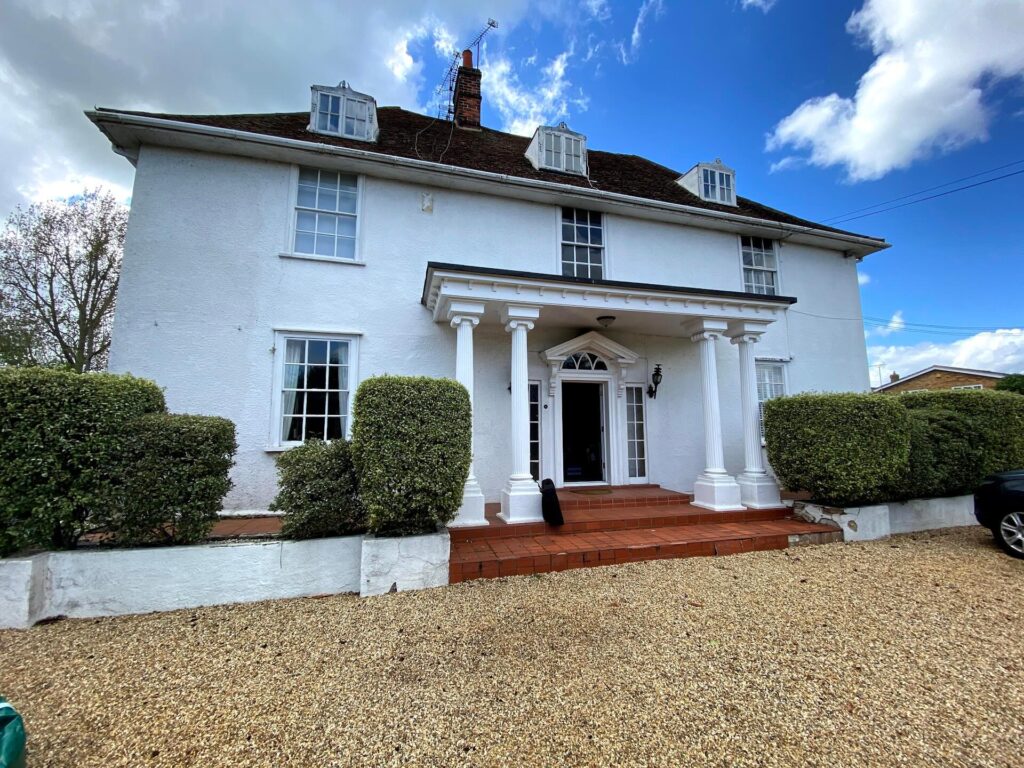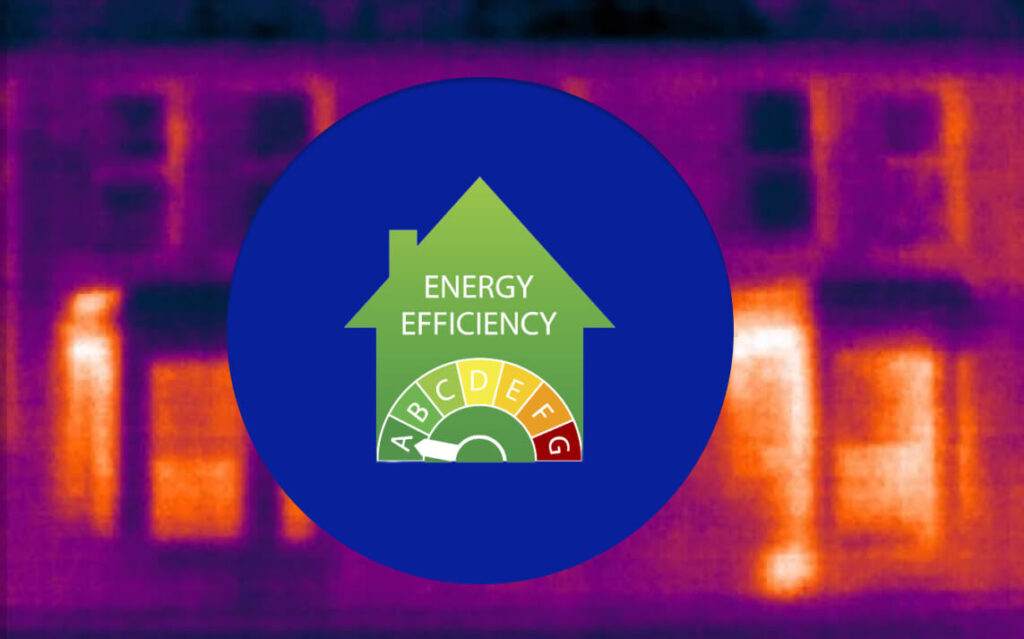
Owners or landlords of properties for sale or rent in the UK must obtain an energy performance certificate (EPC) rating.
This is now true for all listed and historic buildings too. An EPC rating lets buyers, renters (and you) know how energy efficient the property that they are intended to buy or rent is. This is one of the key factors that buyers look at, as it can determine the scope of future improvements. For renders, an EPC rating helps to estimate the bills.
The building will be given a rating between A (extremely efficient) and G (inefficient).
An EPC rating (energy performance certificate) also offers information about what energy efficiency could be achieved if you were to make a few changes or improvements. It also highlights some cost-effective ways of doing these changes.
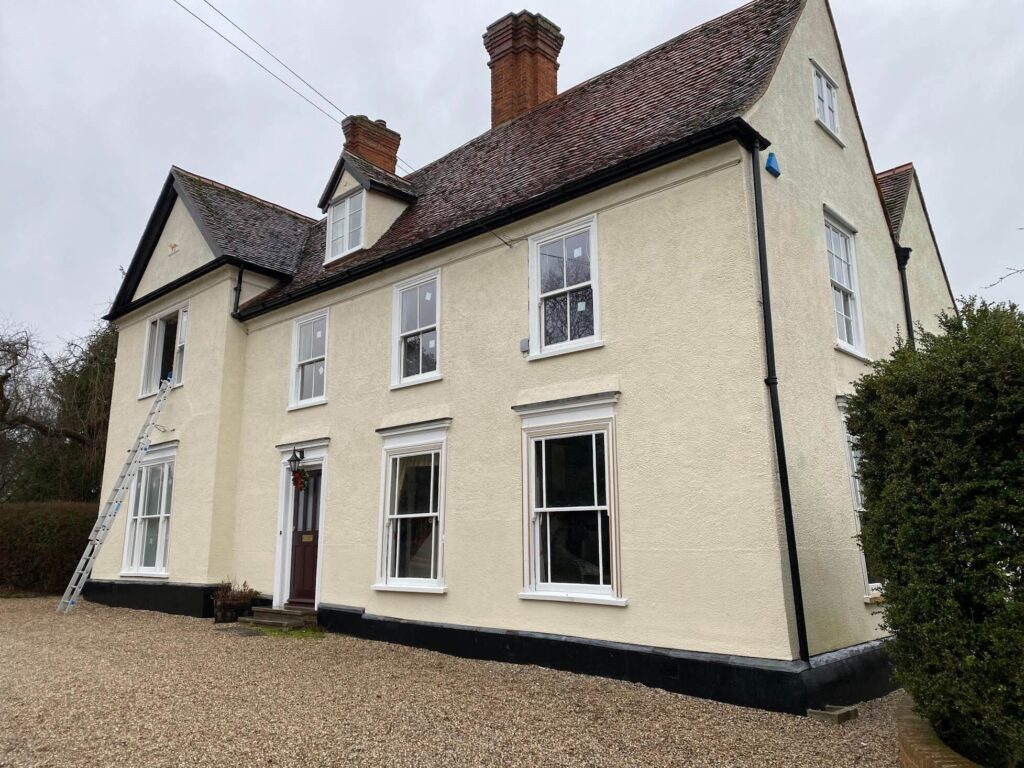
So, if you are looking to make some changes to your home so it’s more energy efficient, getting an EPC rating for your home is actually a great way to start. You’ll be able to see which methods of energy consumption and savings you should look into.
Energy efficiency in your home can be improved in many ways. Below, we’re going to focus on what people with listed or period homes can do.
Scott James specialises in wooden window restoration and retro-fitting double glazing into existing windows, so most of our customers own period homes.
However, if your home is slightly more modern, there is still plenty of info below that can help you improve the EPC rating of your home.
Why do you need to improve the EPC of your home?
Homes with higher EPC ratings are, in general, more attractive to potential buyers. Of course, with period and listed properties, the attraction is often the incredibly beautiful home.
However, EPC for listed buildings is still important.
EPC ratings can influence potential buyers’ decision-making. As previously mentioned, EPC gives an idea of potential improvements.
Of course, many period homeowners want to improve their EPC rating while they live there. Period homes can cost a lot of money to heat simply because the heat loss in older homes is very dramatic.
And many homeowners want to be more comfortable in their homes. Improving the energy efficiency of a home will help you control the temperature throughout the year and make it more comfortable.
If you have the budget, improving the energy efficiency of your home when you are getting to sell, or let can make a huge difference in getting the price you want.
If you don’t have a substation budget to move the EPC rating up, don’t worry, we can not improve all things in our life to A level.
Let’s take a look at the improvements you can make to your home to cut the energy bills, reduce your carbon footprint and get a higher EPC rating, shall we?
Improving your home’s EPC rating
Replacing single-glazing with ultra-thin double glazing
Single-glazed windows draw lots of heat from inside your home to outside, and vice versa in the colder months. Reducing the volume of heat transfer through your windows glazing allows you to increase efficiency significantly.
Adding double glazing to your home is a great way of doing this. And it could save you around £300 a year (for a two-storey terraced house), depending on the double glazing you choose, though this could increase.
Of course, you can’t just go and chuck ugly uPVC windows on a period home; no offence, modern homeowners. However, we can retrofit ultra-thin double glazing into your pre-existing windows that have the same U-value as triple glazing.
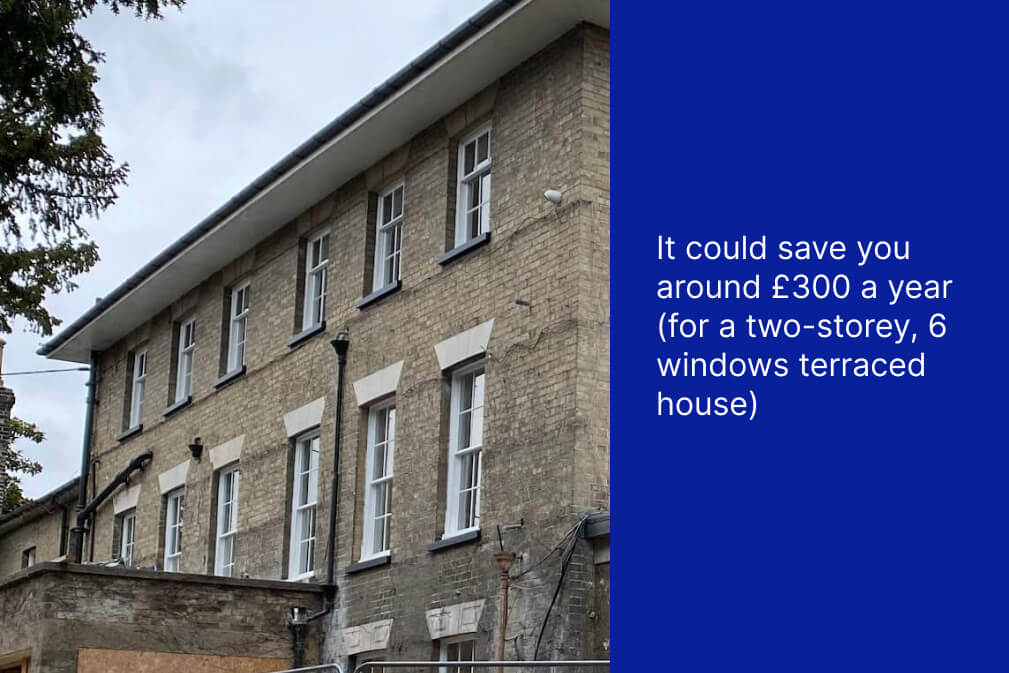
The look of your home won’t change, but the double glazing will have a massive impact on the energy rating of your home. We offer complete packages with draughtproofing, wooden window restoration, double glazing, and painting services included.
A huge amount of the energy your home uses escapes from your windows, and we can help you put a stop to this.
We hope this look at ways of increasing your home’s EPC rating has helped. For more info about our wooden window restoration services and how adding double glazing to your existing windows could help you save energy and money, explore our website further.
External or internal wall insulation
Whether you have solid walls or cavity walls, you can add insulation to improve the heat lost from your walls. Most homes have cavity walls in the UK, and filling this space with cavity wall insulation could save you around £300 a year.
Most of our customer’s homes have solid walls due to the construction of period homes. Older properties with solid walls may still be insulated by adding an insulation layer on the exterior or interior of the house.
However, you require planning permission to insulate your home in this way if it is listed or graded. Still, solid wall insulation could save you around £540 a year.
Floor insulation
Another excellent way of insulating your home is under your flooring. Many period homes have vaulted floors with a cavity underneath that can be insulated.
Floor insulation is estimated to save you around £120-£200 a year on your energy bills.

So, granted, it isn’t the biggest saving, but still worth considering. For a quick fix, you could run some silicone sealant around the skirting boards of your home and put it in any gaps in the flooring.
This can improve your EPC rating in the short term, and if you’re looking to sell, this is an easy solution that will only take an afternoon.
Loft insulation
Most homes in the UK have some loft insulation, but it is rarely enough to keep heat escaping from your home.
The roof can suck heat out of your home very quickly, and it can store heat in the summer almost to the extreme. Ideally, the heat your home generates should be blocked from the loft space. However, blocking it completely isn’t possible.

Still, you can add more insulation to help with the heat transfer. Most lofts have 120mm of insulation in them as standard. Topping this up to 270mm of insulation will help.
This could save around £55 a year. While you’re in the loft, you can look into roof insulation as well.

Probably the easiest thing to do is to switch to efficient light bulbs
The quick and low-budget option that everyone should have done already is to upgrade the bulbs to the most energy efficient you can find.
Replacing traditional and halogen bulbs with LED light bulbs will have an average cost of £90 for a typical house.
However, it saves around £65 a year, and you’ll be rewarded with a better energy efficiency rating if you’re looking to sell.
Adding hot water cylinder insulation
Hot water cylinder jackets are readily available. They cost around £17 but can save around £70 a year. The preferred thickness of the jacket is above 80mm.
The thicker the water cylinder jacket, though, the better the insulation. If you already have a water cylinder jacket installed, have a look at the thickness.
This isn’t a common swap that homeowners make, and energy companies are certainly not going to include a thicker jacket to save you energy. Removing the older, thinner one and replacing it with a thicker one is really easy to do on your own.
Replacing the boiler
A new, efficient boiler isn’t the cheapest modification or improvement you can make to your home, but it is an upgrade that could be worth considering, especially if you’ve just moved into a period home.
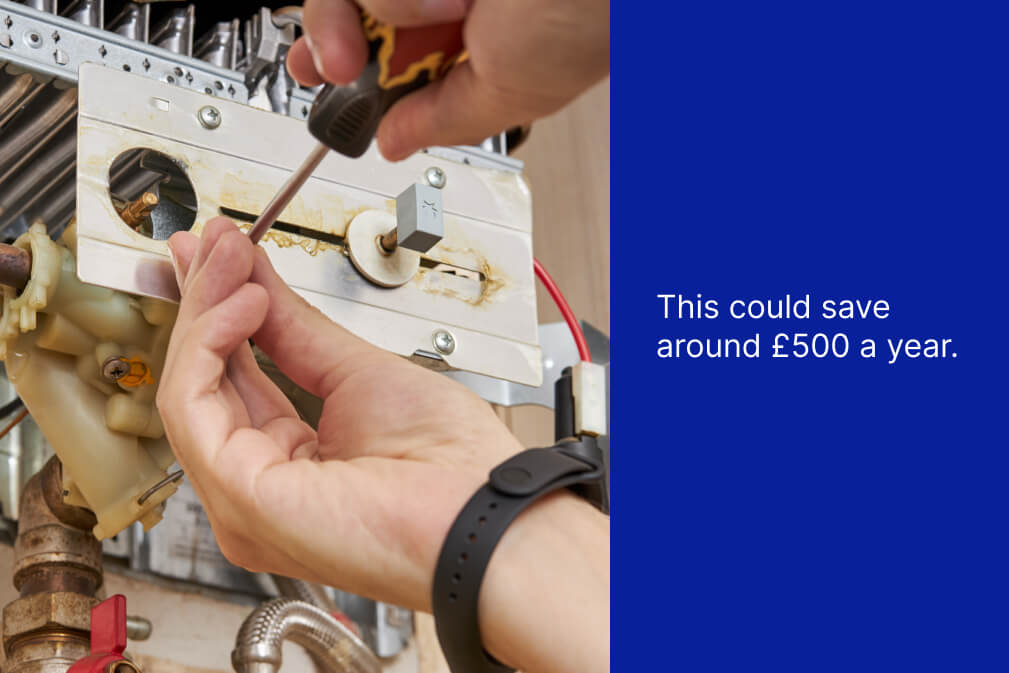
The cost of replacing an old boiler is hard to say, but it averages out at around £4000 depending on the other energy efficiency improvements you choose along with the new boiler. However, the payback for a better boiler is a saving of around £500 a year on your energy costs. Inefficient boilers cost a lot of homeowners a lot of money each year.
Many property owners concentrate on the heat their property is losing rather than the central heating, the thing that is creating the heat.
Smart meter for heating and electricity
Installing and using heating controls effectively can make a big difference to your home’s energy consumption.
There are lots of helpful gadgets available in this category to help control your heating more effectively. From smart thermostats to thermostatic radiator valves and more.
Now, this isn’t a quick fix when it comes to energy efficiency measures, and it isn’t the cheapest option. It will cost around £600, depending on the system you choose. But it can save about £180 a year, so you’ll make your money back within four years.
Read more articles

Thoughts on Double-glazing Alternatives
Thoughts on Double-glazing Alternatives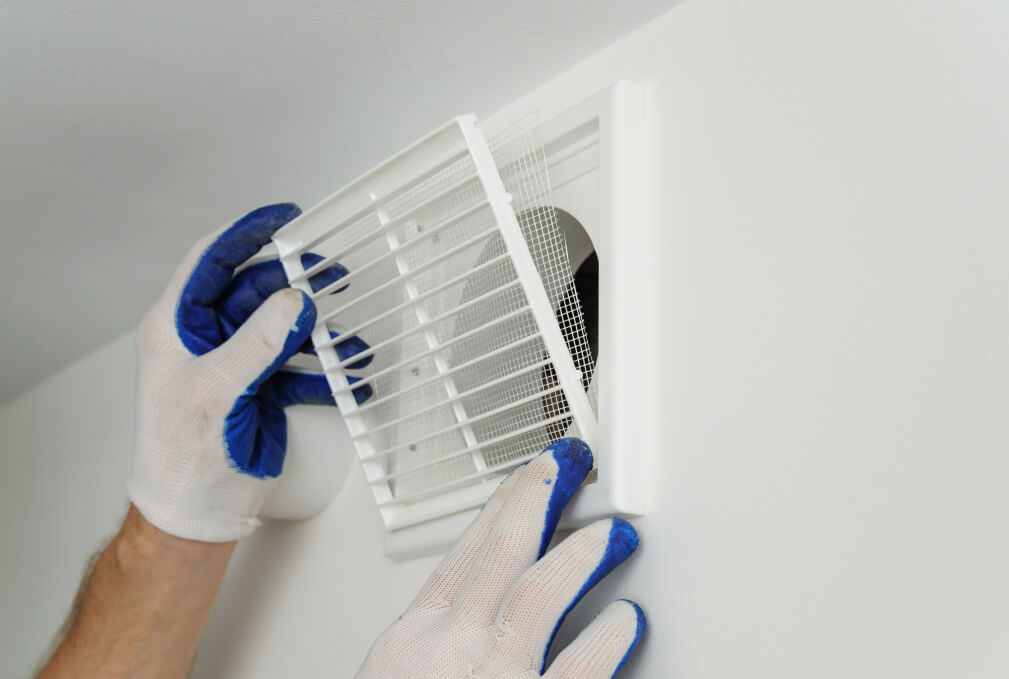
Condensation on windows
Condensation on windows
Is there a vacuum in double glazing?
Is there a vacuum in double glazing?